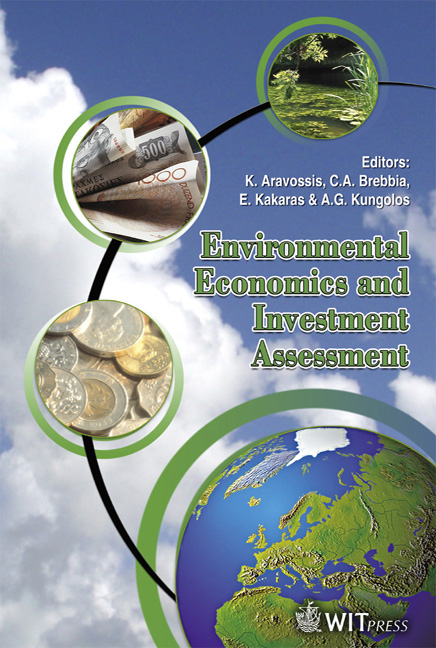Life Cycle Evaluation And Economic Considerations Of The Pyrolysis-gasification Of Municipal Solid Waste In Singapore
Price
Free (open access)
Transaction
Volume
98
Pages
12
Published
2006
Size
394 kb
Paper DOI
10.2495/EEIA060051
Copyright
WIT Press
Author(s)
H. H. Khoo, R. B. H. Tan, S. Salim & Y. M. Wu
Abstract
Due to limited territory for landfills in Singapore, incineration is given top priority for the treatment of wastes that are not recovered, reused or recycled. Unfortunately, incineration emissions contain gases which possess high polluting characteristics that can severely affect human health in the long run. In this paper, a pyrolysis-gasification technology is introduced and compared with an existing incinerator operating in Singapore. Pyrolysis-Gasification technologies have received increasing attention because the process can produce high quality fuels, such as Syngas. A life cycle assessment approach was employed to study the stream of MSW – from generation to its final conversion. The economic considerations, including social costs of air emissions associated with the stream of MSW at each stage, as well as, the economic values of the final products (electricity or Syngas), was evaluated. It was projected that the existing incineration and proposed plants’ annual values (PTotal) were nearly similar – approximately 70 million/year without considering the social or economic costs of pollution. When the costs of air emissions were taken into account, the new pyrolysis-gasification technology displayed a significant advantage over Incineration. Sensitivity analysis demonstrated that the time to \“pay back” the capital expenditure for the proposed plant changed considerably with fluctuations in the amount of Syngas produced and operating costs, but less with capital costs. Keywords: municipal solid waste (MSW), incineration, pyrolysis-gasification, life cycle approach, cost and economic considerations.
Keywords
municipal solid waste (MSW), incineration, pyrolysis-gasification, life cycle approach, cost and economic considerations.





